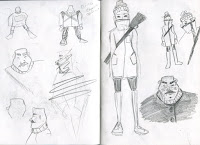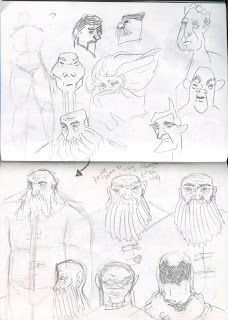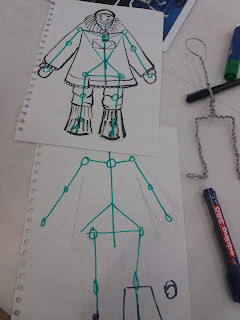Unfortunately, due to personal reasons, this project was a struggle for me to complete. Pacing was a huge issue I had which was not apparent until i was editing the scenes together. On the positive side, this was an opportunity to put my premiere pro skills into practice. I edited the clips in different ways to adjust the individual pace of each part. I think this was a successful attempt.
I set out to create a horror piece that had some cinematic and complex animation (such as the rotation and sink of the seal). In post-production, I decided to deviate from the storyboard slightly by adding in flashes and removing a scene because I wanted to increase the tension by adding some disorientating effects. While my soundscape I had made for my animatic had failed, I edited down the number of sounds for the final( namely a beating heart and excessive static noise). Originally, I had wanted to use the rushing wind to establish the setting, emphasise the isolation (no animals or human noises) and hint at the themes of nature. Then, I was going to have loud static overwhelm and fade out on top of the wind. In the animatic, the feedback I got was that this was too noisy. It did not add to the suspense but instead induced headaches. To combat this, I used the static sparingly and had the two noises melt in and out of each other.
In the future, i would limit the amount of backgrounds I needed to use as I think it would have provided a better sense of space. It would also allow my timing to be a little better as the viewer would be able to register the action of the scene easier.
EVALUATION SHEET EXTRACTS
The purpose of this module was to develop our
understanding of the animation production pipeline as we completed all steps from
pre-production to post-production work as a single person team. By doing this,
I feel I have a disillusioned sense of how long each process takes and the
importance of setting limitations to a project. This module has better prepared
me for group work as I now know to limit my ideas from the beginning to not
over extend my team. I think it is also to improve our understanding of
techniques such as how to build an armature and create walk cycles. Surprisingly,
I think that the best work I made in this module was the creation of the stop
motion armatures and the walk cycle. I think that I made deliberate and well
thought out choices when making my model that elevated the standard of my work.
For instance, taking the time to source fabric and stitch together the clothing
allowed for it to better match my designs than sticking to plasticine would
have. It also allowed for cleaner moving when animating as the fabric didn’t
dry solid like the plasticine would have. When animating, I considered the
force of the wind and how to best hint to his character. Overall, I was more
conscious of each choice I made in this process.
Due to personal circumstances, I
was not able to apply myself to this module at the level of focus I had
anticipated during my early pre-production. The goals I set out for myself in
the beginning were not reachable in the situation I was later in. I did not set
firm limitations to the task such as limiting the number of backgrounds or
textures I could use; this effected the professional level of my work as I
could not streamline the animation process to better meet the brief, One of the
main issues I have with my animation is timing. I feel that with experience,
gauging how long an action convincingly takes and how much to add on will
become more instinctual. In the future, I will seek more feedback from peers on
the pace of each scene. While being experimental is useful in pre-production in
order to try out new ideas, considering the time limit of the project, I should
not have jumped from different mediums (pencil to watercolor to digital). I
have learnt that the limitations set before the development of a project are
vital to ensuring the brief is met. I feel that if I had limited the story to
three or four settings, each stage from the storyboarding would have been more
suited to the 30 second time limit. My storyboards moved too quickly which
prevented good pacing for each scene. I did not notice this until after editing
the scenes together in post-production where I did my best to fix this. Despite
planning my animation by seconds, I have produced scenes that are too fast to
register for the viewer. Next time, there are several things I should do to fix
this issue: firstly, my animatic should have been much more developed as the
still images did not inform me at all. If I had done this, I could have fixed
the timing by adding frames and filler. Another way I could have prevented this
is by planning less scenes and pulling the narrative back to a smaller part of
the story. In this module, my confidence in software has grown and I have
utilized the skills I have learnt in photoshop to make some animation easier
and smoother. When working on the stop motion armature, I feel that my thought
process was more purposeful than in other tasks. Next time, I would like to
maintain this focus and it will be more effective on a project with more
realistic restrictions. While I feel that my techincal skill has grown
throughout this module (such as the seal and expression scenes being at a
higher standard than I could ahcieve before), i know that the timing does not
allow for the overall piece to register.





































